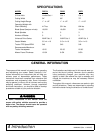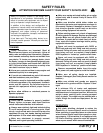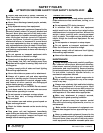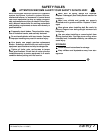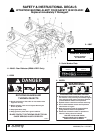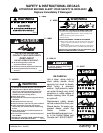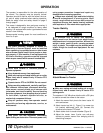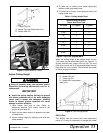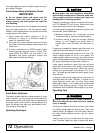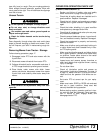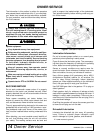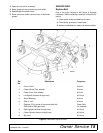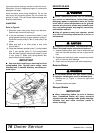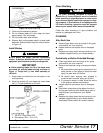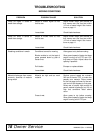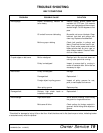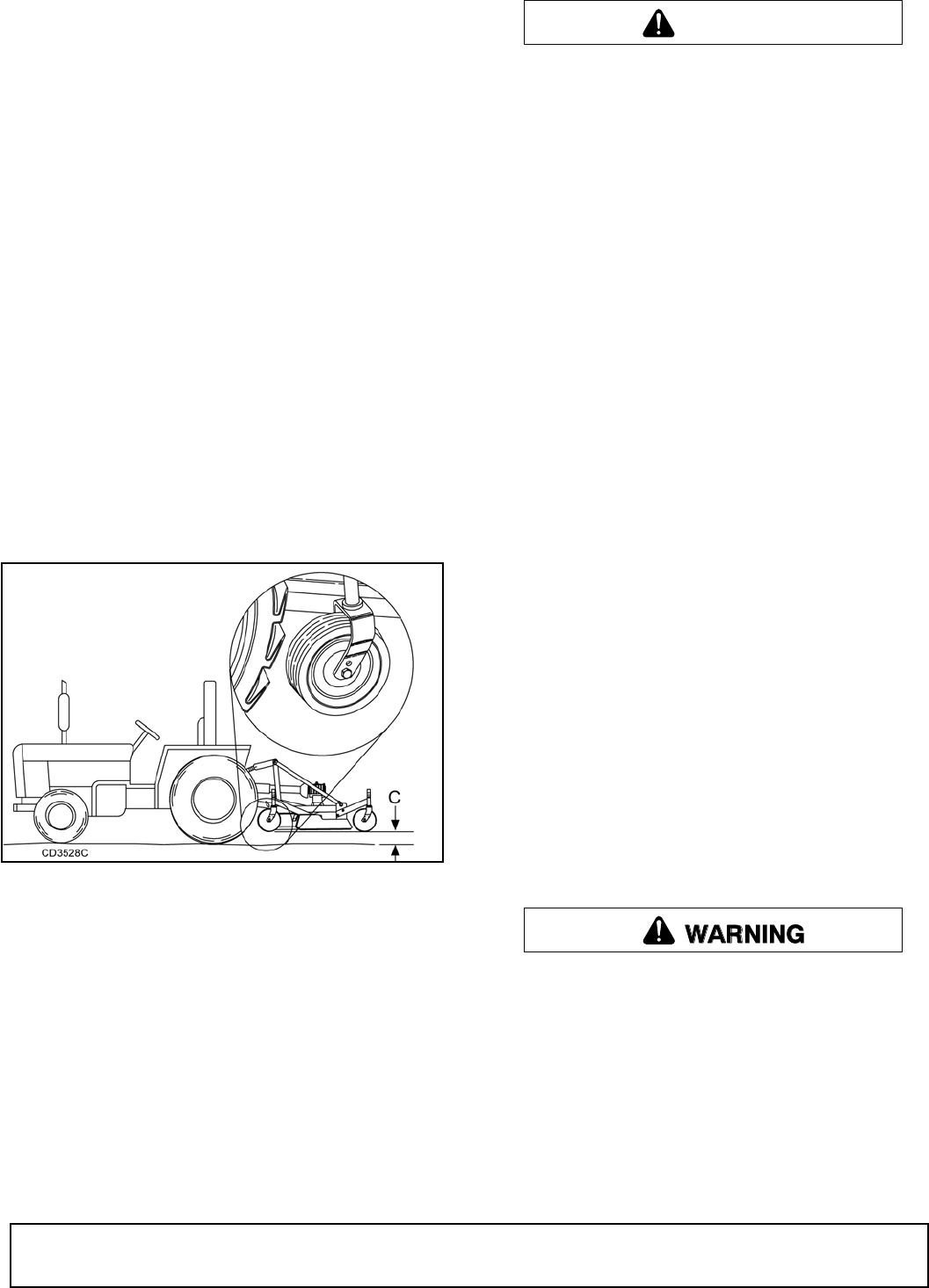
12 Operation
MAN0260 (Rev. 1/12/2007)
hitch plate attachment point to obtain proper tire clear-
ance and/or lift height.
Front Caster Wheel Interference Check
IMPORTANT
■ Do not operate tractor and mower until this
interference check has been performed. If you
change tractors, you must perform the check for
that mounting.
Perform this check with all of the spacers and springs
above the caster wheel arm. This will place the caster
wheels in their highest position and provide the lowest
cutting height for the mower.
1. Raise mower with tractor hydraulics to 16" at
dimension C, Figure 5, or maximum height of
tractor lift, whichever is less.
2. Pivot both front caster wheels forward and check
that there is clearance between caster wheels and
tractor tires.
3. If there is interference on RDC54 model, adjust
mower hitch plate point as shown in Figure 4. On
model RD60 and RD72, the hitch plate is not
adjustable; see tractor operator’s manual and
adjust tractor wheels accordingly.
Figure 5. Front Caster Wheel Interference Check
Front Roller (Optional)
The caster wheels effectively reduce scalping in most
cases. However, you may encounter areas where the
caster wheels and/or side skids drop into depressions
and allow center of the mower to contact ground and
scalp. An optional front roller may be installed to mini-
mize scalping. See page 40.
Operating Technique
Stop power unit and implement immediately
upon striking an obstruction. Dismount power unit,
using proper procedure. Inspect and repair any
damage before resuming operation.
Power for operating the mower is supplied by the trac-
tor PTO. Operate PTO at 540 rpm. Know how to stop
tractor and mower quickly in an emergency.
If mower becomes plugged causing belt to slip for over
two seconds, follow these steps:
1. Maneuver equipment into a previously cut area
and allow mower to clear accumulated material.
2. Continue running at least two minutes, allowing
pulleys to cool. Stopping the mower when in
contact with a very hot pulley will bake and ruin
belt.
Proper ground speed will depend upon the terrain, the
height, and type and density of material to be cut.
Normally, ground speed will range from 2 to 5 mph. Tall
dense material should be cut at a low speed; thin
medium-height material can be cut at a faster ground
speed. Always operate tractor PTO at 540 rpm to main-
tain proper blade speed and produce a clean cut.
Under certain conditions, tractor tires may roll some
grass down and prevent it from being cut at the same
height as the surrounding area. When this occurs,
reduce your ground speed, but maintain PTO at 540
rpm. The lower ground speed will permit grass to par-
tially rebound.
In general, lower cutting heights give a more even cut
and leave less tire tracks. However, it is better to cut
grass frequently rather than too short. Short grass
deteriorates rapidly in hot weather and invites weed
growth during growing seasons. Follow local recom-
mendations for the suitable cutting height in your area.
Operating Tips
Inspect and clear area of stones, branches, or
other hard objects that might be thrown, causing
injury or damage.
Extremely tall material should be cut twice. Set mower
at a higher cutting height for the first pass. Then cut at
desired height, 90 degrees to the first pass. Remem-
ber, sharp blades produce cleaner cuts and require
less power.
Analyze area to be cut to determine the best proce-
dure. Consider height and type of grass and terrain
CAUTION



